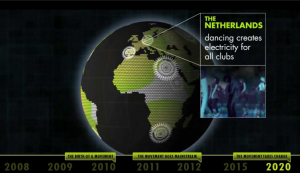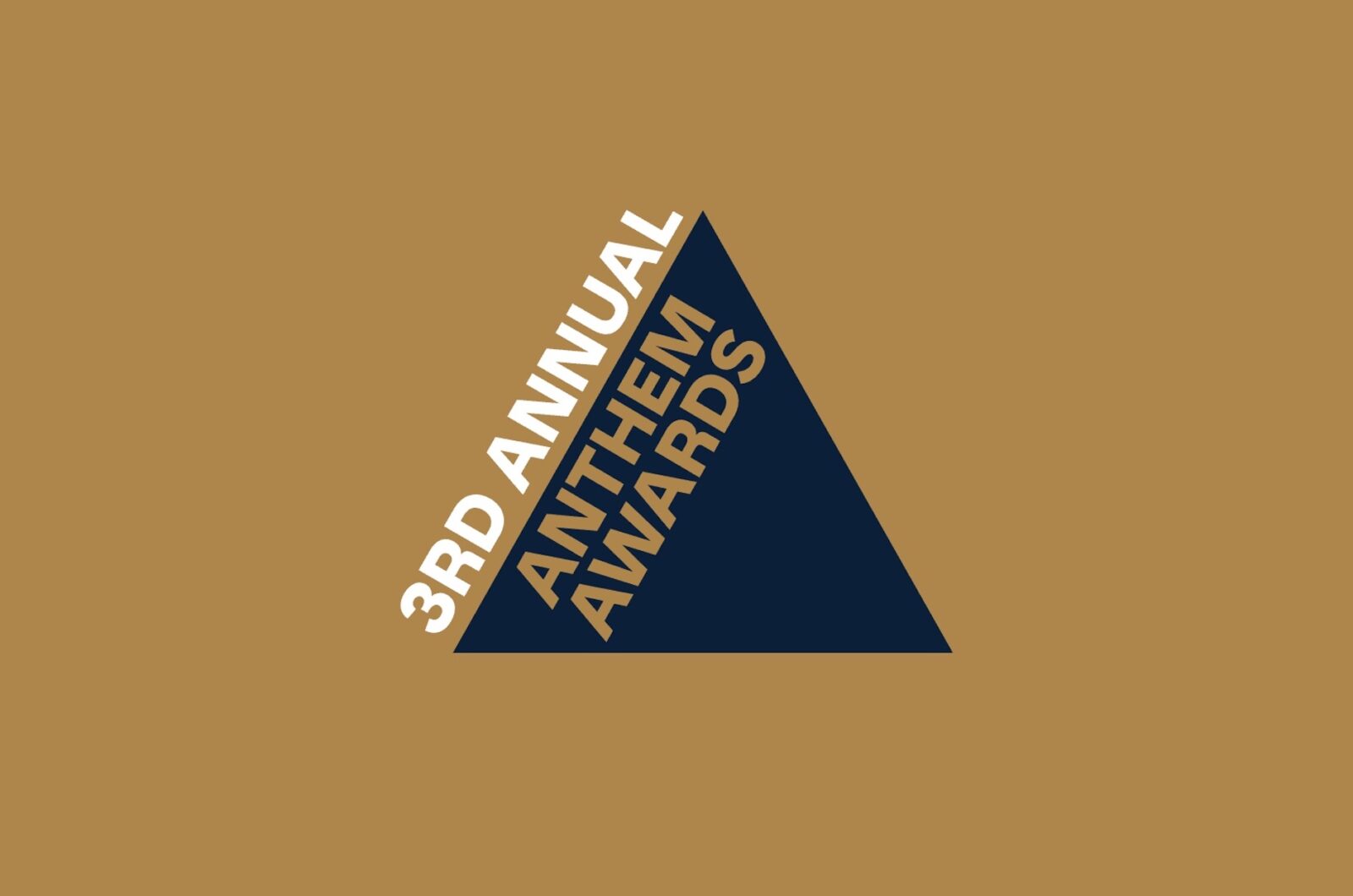Power Up the Dance Floor
ACE Staff
|January 3, 2011

Did you know that a dance club uses 150 times the amount of energy as an average household??? That’s part of what inspired Stef van Dongen, a Dutch innovator, to dream up a project to make nightclubs greener (NY Times).
Remember this part of the ACE presentation?

Many of you, after the presentation, ask us, “Can we really get electricity from dance floors?”
The answer is YES!! Stef van Dongen and his crew in the Netherlands have figured out how.
So, how does it work? How many clubs like this exist? Could we make all gym floors make electricity too?
I did a little research and here’s what I found:
How do you get electricity from a dance floor?
The basic idea is this: The dance floor is made up of square panels. Within each panel are quartz crystals. As you dance wildly around on the floor, the floor moves up and down slightly (less than an centimeter). This movement compresses the quartz crystals, which generates an electric current. This process of compressing a material (specifically certain types of crystals and ceramics) to create electricity is called piezoelectricity (sounds cool, right?).
Anyway, the electric current, generated by the compression of those quartz crystals in each dance floor panel, is fed into nearby batteries. This stored energy is used to power parts of the nightclub! Pretty sweet!
How much electricity can one crazed dancer create?
With the current technology, one person can generate 5-20 Watts, depending on their weight and activity level (ie, the harder you dance and the higher you jump, the more electricity you’ll create!). That means one dancer could power a couple LED lights and two wild dancers could power a CFL lightbulb.

How do you know how much electricity you’re making?
The company that makes the dance floors, called Sustainable Dance Floor (SDF), thinks it’s really important for the dancers to understand they’re the ones powering the floor and so they give the dancers some visual feedbacks:
(1) LEDs in the floor light up with as you dance around , kinda like the Michael Jackson’s Billie Jean video, (2) they have a big “power tower”, a tall tower of transparent plastic, that lights up higher and higher as you produce more and more electricity, and (3) there’s a digital display screen that shows the instantaneous power (how much is being produced RIGHT NOW) and the total power produced for the night.
When was the first electricity-producing dance floor created?
It all started as an idea back in 2005. Some Dutch innovators and architects (at a companies called Enviu and Doll Lab) wanted to create a “green club.” They came up with the idea for the dance floor, along with all sorts of other energy-saving techniques for clubs, like a low-waste bar, cafe food made from leftovers, rainwater-flush toilets and a water purification system turning urine into drinking water (whoa, like they do on the International Space Station?!? Yup.) (Guardian 2007). They presented all their ideas at a big kick-off event in 2006. The club owners and dancers of the Nertherlands loved it!
Then, they started a new company, Sustainable Dance Club (SDC), to actually make the floors. In 2008, the first piezoelectric dance floor was installed in a club called WATT in Rotterdam (Netherlands).
The new dance (dance) revolution was born! (ok, bad pun, I know.)

Where can I shake my thang on one of these electric dance floors?
WATT club in Rotterdam, Netherlands
Club4Climate club in London, England
Eco House in San Paulo, Brazil.
And, a bit closer to home…the Miami Science Museum!!
How much do these floor systems cost?
The company, SDC, has a few different options. You can rent or buy anything from a 9-tile showcase floor to a 100-tile full dance floor. They also have a Mini Dance Club for 3-4 people, complete with a virtual DJ, enthusiastic crowd sounds, and a mirror ball in the ceiling that spins when you get enough energy.
The company doesn’t have prices on the website, but I did find in a NY Times article that reports the guy who put in the first floor at the WATT club in Rotterdam paid $257,000 for it!! He says because it was the first generation it wasn’t as efficient as the newest ones are – hopefully that means the price has gone down some since then!!
And now, for the question, I know you’ve all been waiting for…
What about my school’s gym? Any hope we can get an electricity-generating floor for that anytime soon?
Well, I don’t know about soon, but SDF says they are currently developing a new version of the floor that could be used in other places, like gyms, train stations, airports, etc. Keep your eyes and ears open for new developments (and your fingers crossed that prices drop as more innovation occurs!!).
Until then, what are you going to do to reduce your energy use at the club, at home, or at school? Let us know by telling us your DOT (a pledge to Do One Thing to help the environment and cool the climate).
Join our Youth Action Network
More Blog Posts

Our Climate Wins Were on Display at the State of the Union
Today, the Biden Administration temporarily halted all pending decisions on 17 Liquefied “Natural” Gas (LNG) projects across the Gulf South.
Read More
ACE Honored As An Anthem Awards Finalist
Action for the Climate Emergency (ACE) announced today that it won Bronze in Best Use of AI at the 3rd …
Read More
BREAKING: Biden Halts LNG Export Expansion
Today, the Biden Administration temporarily halted all pending decisions on 17 Liquefied “Natural” Gas (LNG) projects across the Gulf South.
Read More